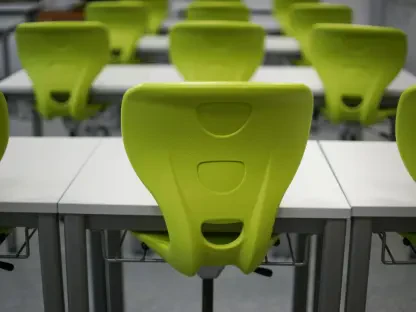As children in southern Arizona prepare to return to school, a significant focus must be placed on mental wellness, a fundamental aspect often overshadowed by academic and extracurricular readiness. With statistics revealing that one in six children between the ages of 6 and 17 experiences a mental health condition each year, it is imperative to incorporate emotional well-being into the educational framework. Alarmingly, suicide has become the second leading cause of death for children aged 10 to 14 and the third for those between 15 and 24. These distressing figures underscore the urgent need for an expanded definition of school readiness that addresses mental health in a manner equal to academic preparation.
Recognizing Mental Health Challenges
The Role of Statistics and Awareness
Raising awareness about the mental health challenges that children face is crucial to fostering an understanding of their emotional needs. Statistics from the National Alliance on Mental Illness provide a stark reminder of the enormity of the situation, drawing attention to the crucial aspect of mental health in youth development. These figures illuminate the substantial gap in addressing emotional challenges within the schooling environment, signaling the importance of integrating mental wellness into educational planning. The overwhelming prevalence of mental health conditions affecting young children is a call to action for the community and educators alike, prompting a reevaluation of priorities in child development.
Effective strategies must be employed to address these challenges, ensuring a significant focus on mental health within the educational terrain. This endeavor involves scrutinizing the cultural values and societal norms that often impede the recognition of mental health issues as serious threats to children’s well-being. Societal approaches need to be adjusted to reflect an understanding of mental health as a crucial component of childhood development, rather than an unfortunate anomaly. By making mental health awareness a community effort, it becomes more likely to foster environments that adequately support the emotional needs of children, reducing the prevalence of mental health issues among them.
Understanding Suicide and Its Impact
Highlighting the grim statistics of suicide rates among the youth is vital for understanding the pressing nature of this public health issue. With suicide being one of the leading causes of death among young children and teenagers, it becomes apparent that the problem is more than intrinsic—it is widespread and demands immediate collective attention. Such statistics emphasize the need for policymakers and educational institutions to prioritize mental health as a central element in the framework of plans aimed at improving youth well-being. Efforts should focus on creating supportive environments that reduce the stigma associated with discussing mental health issues openly.
Factors contributing to these statistics involve a complex interplay of societal pressures, lack of support, and the anxieties of the modern educational landscape. Recognizing these elements is the first step in developing intervention measures that are informed and effective. Schools and communities have a responsibility to establish programs that identify and assist children at risk, promoting both preventive and protective strategies against mental health issues. Through consistent dialogue and supportive networks, the cultural narrative surrounding mental health can shift from one of stigma to one of support and understanding.
Building a Supportive Environment
The Importance of Connectedness
The concept of “connectedness” emphasizes the significant role that strong relationships play in a child’s life, serving as a protective factor against mental health challenges. Establishing solid bonds with peers and adults creates a support network that helps children feel valued and understood, mitigating risks associated with mental health conditions. Encouraging these connections within schools and communities can significantly reduce the prevalence of mental health issues by promoting an inclusive environment where children feel safe to express themselves.
Tools like Optum’s “Conversation Starter” cards provide families with practical methods to engage children in meaningful dialogues about their feelings and experiences. These interactions break down barriers and foster a sense of trust that is essential in tackling the taboo nature of mental health discussions. By promoting these engagement tools, educational institutions not only support the emotional well-being of children but also educate parents and guardians on recognizing and addressing early signs of mental health struggles. By expanding the conversation around mental health to include families and educators, a communal support system can be established.
Physical and Nutritional Health
Maintaining physical health is equally critical in supporting youth mental wellness, underscoring the need for routine wellness visits and sports physicals. Such exams help detect issues that might be overlooked, ensuring early intervention and care. Nutritional health also plays a key role, with balanced diets as recommended by the Dietary Guidelines for Americans being essential for cognitive and emotional functioning. Encouraging healthy eating habits is an investment in both physical and mental health, providing children with the energy and focus required to excel in various aspects of life.
By fostering healthy lifestyles through nutrition and exercise, children are better equipped to handle stress and emotional challenges. Schools can serve as facilitators of health by incorporating lessons on nutrition and physical activity into their curricula, promoting an understanding of well-being that extends beyond the classroom. Educators and parents must collaborate to develop routines that encourage a holistic approach to health, preparing children to face life’s challenges with a balanced perspective. This holistic approach to wellness highlights a commitment to nurturing children’s overall development, not just their academic achievements.
A Call for Community Effort
As students in southern Arizona gear up for the return to school, it becomes crucial to prioritize mental wellness alongside academic and extracurricular preparation. This facet of readiness is often overlooked, yet with the alarming statistic that one in six kids aged 6 to 17 grapples with a mental health condition annually, it’s clear that emotional well-being needs to be integral to the educational agenda. More concerning, suicide stands as the second leading cause of death for children aged 10 to 14 and ranks third for those aged 15 to 24. These troubling statistics heighten the need for an expanded notion of school readiness, one that gives mental health the same weight and attention as academic achievement. This approach is vital for equipping children with the comprehensive support necessary for their overall development. By ensuring mental health is part of the school readiness checklist, educators and parents can foster a more supportive environment that recognizes and addresses the varied needs of each child.









